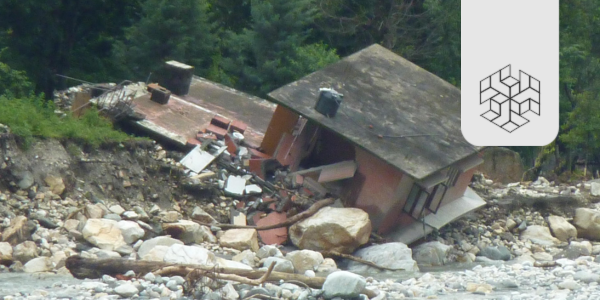In March 2023, a Climate Action Plan was finalised for Gurugram—‘The Millennium City’, called so in light of its rapid growth into an economic powerhouse with businesses and job seekers investing in the city from across India and abroad. It is home to around 250 Fortune 500 companies and brings in the majority of investment for Haryana. While the plan aims to achieve net zero greenhouse gas emissions in the city by 2050, it highlights the various challenges climate change has brought to the city. This commentary discusses the interlinkages of climate change, rapid unplanned urbanisation and the lives of urban informal labour in the context of Gurugram.
Making sense of The Millennium City
Gurugram stands to be the face of the well-established argument about cities being unsustainable by design. Since the beginning, the city’s development has been profit-intensive; for the longest time it did not have a local government, and the fate of the city was in the hands of private players pursuing their individual agendas without macro-level planning. There are two major acts in the history of Gurugram: The Haryana Urban Development Act of 1977 and the Haryana Development and Regulation of Urban Areas (HDRUA) Act of 1975-76. These gave rise to the current design and demographic of the city, wherein each metropolitan unit, such as an office building or a residential complex, is like a ‘private island’ with all the facilities of a small city. This ensures no dependence on the subpar facilities provided by the government, such as inadequate public transportation system, regular power failures, understaffed and unreliable local postal service and inadequate water supply.
Under the ‘Millennium’
Owing to the aforementioned developments, the city grew into a major industrial and IT hub, which led to the migration of many people from across India and increased the population manifold. The population surge has strained the already unplanned city’s facilities. Coupled with class divide and inefficient policy interventions for the working class, it has led to the rise of urban slums in the city. These slums, however uninhabitable, provide shelter to migrants from other states working in low-income jobs, such as garbage collectors, domestic workers, construction workers, rickshaw pullers, etc, whose manpower runs the city. Profit motives and the class divide lead to subpar investments and planning in EWS housing, exacerbating the struggles of the underclass informal labourers, despite the Haryana government mandating that private builders reserve 20% of land in all housing projects for EWS. Programmes like The Ashiana Project for housing slum dwellers, launched in October 2009, ended up being stuck in a loop of poor implementation, such that the benefits never reached the poorer sections of society.
Moreover, there have been continuous efforts to cover up the underlying issues with the city and seemingly live up to the given title for the purpose of advertisement. The slum dwellers of Gurugram would be left uprooted and unheard for projects such as the development of a park. Moreover, slums are often demolished as they encroach on government-owned lands. There are even actions taken against the slum dwellers or the individuals who rent out these lands to them. There have been multiple incidences of fires in slums, which spread wildly and burn down hundreds of shanties due to inflammable objects lying too close to each other in these densely packed small spaces. Such incidents render the population even more vulnerable by leaving them homeless and at the mercy of the erratic climate conditions with no provisions by the government to support them. These efforts shape a development that focuses on the city’s aesthetics and serves the rich.
Climate change in the mix
Faulty drainage systems causing waterlogging during rains, limited public transport connectivity, traffic congestion, poor waste disposal systems, poor air quality and the class divide are issues woven into the fabric of the city of Gurugram. Adding to the mix are the effects of climate change, which then cause havoc in the city, more so for the informal labour sector and the slum dwellers.
The catchment area and water bodies in the city are decreasing with the rise in concretisation, encroachments and improper waste disposal into the water bodies. The city’s roads are built over natural drainage systems. Additionally, Gurugram has been experiencing unpredictable rains during the monsoon season for the last few years due to the climate change that is in effect worldwide. All of this culminates in the flooding of the city, mainly in low-lying areas such as railway lines, near sewers and highways, where informal settlements often emerge. These areas are often constructed without proper planning and with temporary materials, which add to the vulnerability of the residents, such as loss of residence, exposure to diseases and loss of paid work hours for daily wage workers, amidst the extreme weather conditions. As per the climate action plan report, several hospitals in Gurugram experienced a 10-15% increase in water-borne diseases due to humidity, rain and water contamination in July 2023. With so many slums and blue-collar workers in the city, Gurugram is the locus of such challenges.
A report has concluded that nearly 75% of the labour force—about 380 million people in India—is exposed to heat-related stress. Gurugram has been experiencing heat waves in summer and cold waves in winter, pertaining to climate change. The informal working class are the worst impacted. Their work and living conditions expose them to excessive heat and cold. The tin shanties in the slums do not protect them from extreme weather conditions. Moreover, as blue-collar workers, their work requires them to be outdoors for a long duration, thus exposed to the extreme impacts of climate change, such as heat waves, cold waves and flooding, resulting in many of them often losing their jobs. With inadequate waste disposal plans in Gurugram, the city is prone to climate-induced disasters, such as garbage mound fires like in Delhi, which brutally affect the waste picker communities in the city as well as the slum residents around these areas. The air-conditioned buildings and luxuries enjoyed by the urban rich contribute to the deteriorating climate conditions; however, the worst affected are those who have already been disadvantaged by the class divide that exists, and are overlooked in policy interventions.
The city’s lungs: Aravallis
The Aravallis play a vital role in replenishing the groundwater levels, which is one of the major pain points of Gurugram. It also serves as the city’s green lungs by balancing out the air pollution levels, to an extent, and moderating the hot winds coming towards North India. It also helps prevent desertification¹ of the city, as this green wall separates the city from the Thar desert, thus also preventing the desert dust from contributing to the already poor air quality. It is home to various flora and fauna, and keeps the ecological balance of the surrounding region. However, this last hope for cities like Gurugram, which share the Aravalli belt, seems to be in grave danger for the longest time. The boom in the real estate sector due to the rapid increase in the city population, as well as investments from various industries, has resulted in encroachment into the forest area. The mushrooming of farmhouses and the subsequent development of roads that lead to them or increase the land value in the region, have wiped off a large portion of the Aravallis in Bandhwari. There have been illegal constructions in different regions of the Aravallis, such as the Raisina hills, which have escaped any legal action. Moreover, illegal mining operations continue despite the government banning all mining activities in the eco-sensitive area of the Aravallis in 2009. Such activities strip off the only hope for the city, which seems to be heading towards doom, and put the labourers who work at these mining sites at risk of legal action and health hazards.
Conclusion
The interrelations of climate change, rapid unplanned urbanisation and the informal labour sector in the city pose grave dangers to its sustenance. Well-researched policy interventions must be implemented to address the challenges in these intersections. On a larger scale, the development plans for cities need to be drafted keeping these aspects in mind and have to be far-sighted in their approach. The case of Gurugram does not exist in isolation; rather, it mirrors the country’s development plans and policy implementations regarding informal labour in a way that could combat the impacts of climate change. While these crucial aspects gradually get attention, the complexities must also be urgently addressed.
Notes
¹the process by which fertile land becomes desert. Here, it refers to the extension of the Thar desert to the city in the absence of a wall of trees holding the soil and shielding the city from the accumulation of the soil that the wind carries from the Thar desert.
Author Bio: Smriti is a fellow of Ashoka University’s Young India Fellowship. As a requirement of the fellowship, fellows closely collaborate with an organisation for 8 months through the Experiential Learning Module. During this time, they gain hands-on experience and actively contribute to the organisation’s project requirements. At SPRF, Smriti and other fellows are engaged in three research projects focusing on Climate Resilience, Governance, and Grassroots Women’s Leadership.
Project Overview: Smriti is a fellow of Ashoka University’s Young India Fellowship. As a requirement of the fellowship, fellows closely collaborate with an organisation for 8 months through the Experiential Learning Module. During this time, they gain hands-on experience and actively contribute to the organisation’s project requirements. At SPRF, Smriti and other fellows are engaged in three research projects focusing on Climate Resilience, Governance, and Grassroots Women’s Leadership.






